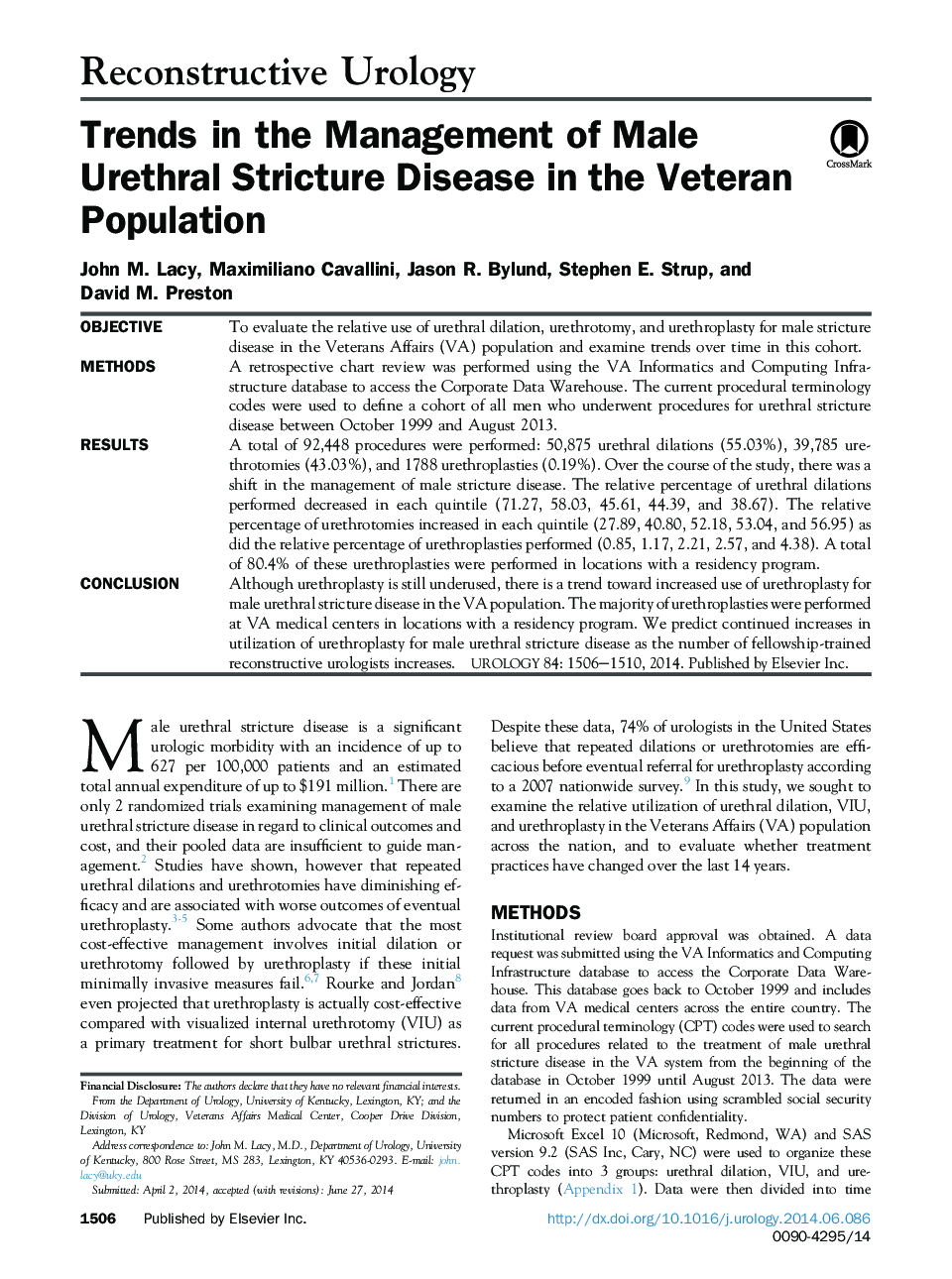| Article ID | Journal | Published Year | Pages | File Type |
|---|---|---|---|---|
| 3898281 | Urology | 2014 | 5 Pages |
ObjectiveTo evaluate the relative use of urethral dilation, urethrotomy, and urethroplasty for male stricture disease in the Veterans Affairs (VA) population and examine trends over time in this cohort.MethodsA retrospective chart review was performed using the VA Informatics and Computing Infrastructure database to access the Corporate Data Warehouse. The current procedural terminology codes were used to define a cohort of all men who underwent procedures for urethral stricture disease between October 1999 and August 2013.ResultsA total of 92,448 procedures were performed: 50,875 urethral dilations (55.03%), 39,785 urethrotomies (43.03%), and 1788 urethroplasties (0.19%). Over the course of the study, there was a shift in the management of male stricture disease. The relative percentage of urethral dilations performed decreased in each quintile (71.27, 58.03, 45.61, 44.39, and 38.67). The relative percentage of urethrotomies increased in each quintile (27.89, 40.80, 52.18, 53.04, and 56.95) as did the relative percentage of urethroplasties performed (0.85, 1.17, 2.21, 2.57, and 4.38). A total of 80.4% of these urethroplasties were performed in locations with a residency program.ConclusionAlthough urethroplasty is still underused, there is a trend toward increased use of urethroplasty for male urethral stricture disease in the VA population. The majority of urethroplasties were performed at VA medical centers in locations with a residency program. We predict continued increases in utilization of urethroplasty for male urethral stricture disease as the number of fellowship-trained reconstructive urologists increases.
